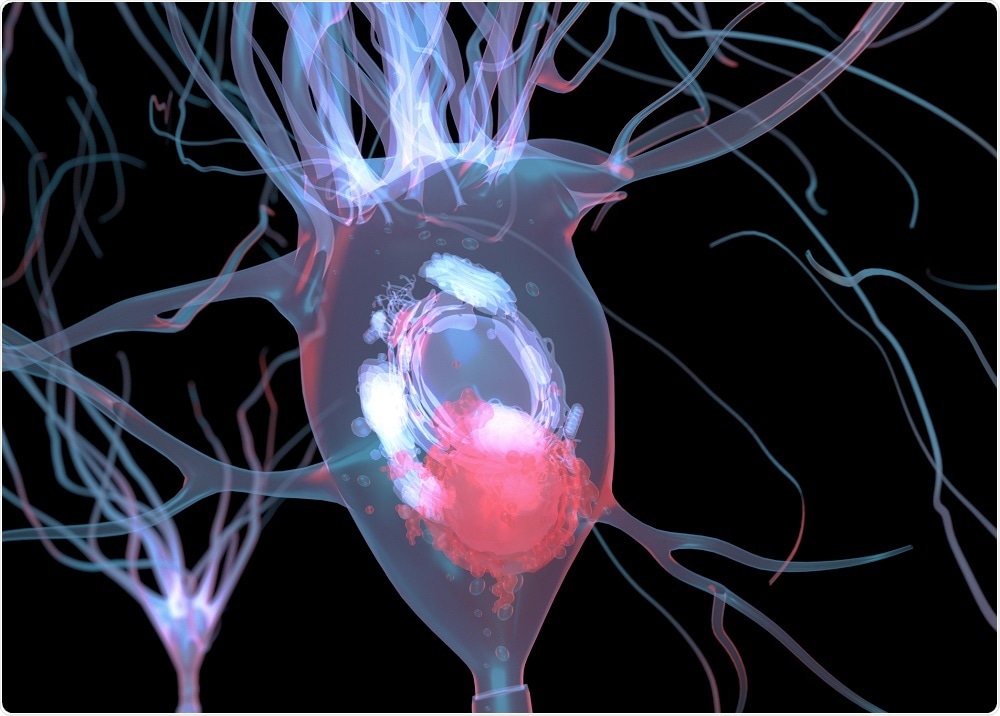Scientists at King’s College London have identified the earliest signs of Parkinson’s disease in the brain up to 20 years before patients present with any symptoms. The findings challenge what had so far been understood about the disease and could lead to new screening tools for identifying high-risk patients and new treatment approaches, although larger studies and more affordable scans would be needed first.
 Alpha Tauri 3D Graphics | Shutterstock
Alpha Tauri 3D Graphics | Shutterstock
Brain scans of high-risk patients showed a loss of serotonin function before movement disorders developed. The serotonin system regulates mood, sleep and movement.
Parkinson's is the second most common neurological condition and affects about 145,000 people in the UK. The main symptoms are movement problems such as shaking and tremors, cognitive disorders, depression, and difficulty sleeping, but the disease is known to establish itself in the brain long before symptoms appear and a diagnosis is made.
Studying the early stages of the disease to find treatment approaches with the potential to slow progression represents a huge challenge to researchers, who have so far linked the condition to reduced dopamine levels in the brain. Although no cure for the disease exists, current treatments are focused on controlling symptoms by restoring dopamine levels.
However, the current study shows that changes in the neurotransmitter serotonin occur very early in Parkinson's disease. These changes could serve as an important early warning signal that a person is at risk.
Our results suggest that early detection of changes in the serotonin system could open doors to the development of new therapies to slow, and ultimately prevent [the] progression of Parkinson's disease.”
Professor Marios Politis, Chief Investigator
Serotonin transporter proteins are the first to change in Parkinson's disease
For the study, Politis and colleagues scanned the brains of 14 people in their 20s and 30s who have a rare genetic disorder that means they are almost certain to develop Parkinson’s once they reach their late forties or fifties.
Parkinson's disease is characterized by a build-up of the protein α-synuclein in the brain. While the cause of this protein accumulation is usually unclear, genetic mutations are known to cause the problem in a minority of cases.
The subjects, who were all from remote villages in Greece and Italy, have rare autosomal dominant point mutations A53T in the α-synuclein (SNCA) gene. The SNCA mutation originates in villages located in the northern Peloponnese in Greece and is also found in people who moved to nearby areas in Italy.
Half the subjects had already been diagnosed with Parkinson’s, while the other half had not yet displayed any symptoms, making the group perfect for analyzing how the disease progresses.
“Given the known neurochemical changes in the serotonergic system and their association with symptoms of Parkinson's disease, we hypothesised that carriers of the A53T SNCA mutation might show abnormalities in the serotonergic neurotransmitter system before the diagnosis of Parkinson's disease, and that this pathology might be associated with measures of Parkinson's burden,” write the team in the journal Lancet Neurology.
After flying the 14 participants to London for brain imaging and clinical assessment, Politis and team compared the subjects’ data with 65 patients with Parkinson’s disease of a non-genetic cause and 25 healthy individuals.
They found that the people who were destined to develop Parkinson’s had sharply reduced levels of serotonin, which controls many brain functions including mood, cognition, movement, wellbeing and even appetite.
The serotonin system started to malfunction in the subjects with Parkinson’s long before symptoms such as movement problems started to appear and before abnormalities in the dopamine system arose.
“Our findings provide evidence that molecular imaging of serotonin transporters could be used to visualize premotor pathology of Parkinson's disease in vivo,” writes the team.
Further research ‘could change countless lives’
The brain scans took the form of PET scans, which are difficult to perform and expensive and the researchers say that further work to develop the technique is needed to make the imaging method simpler to carry out and more affordable for use as a screening tool.
Professor of medical imaging at University College London, Derek Hill, says that although the study provides valuable insights, it also has some limitations.
He points out that the results may not scale up to larger studies and that the highly specialised imaging method is limited to a very small number of research centers so could not yet be used to help diagnose patients or evaluate candidate treatments in large studies.
However, the research does suggest that trying to treat Parkinson’s at the earliest possible disease stage is likely to be the best approach to preventing the rising number of people whose lives are destroyed by this hideous disease, says Hill.
Research manager at the charity Parkinson's UK, Dr Beckie Port, concludes: "Further research is needed to fully understand the importance of this discovery - but if it is able to unlock a tool to measure and monitor how Parkinson's develops, it could change countless lives."
Journal reference:
Wilson, H., et al. (2019). Serotonergic pathology and disease burden in the premotor and motor phase of A53T α-synuclein parkinsonism: a cross-sectional study. The Lancet Neurology. doi.org/10.1016/S1474-4422(19)30140-1.